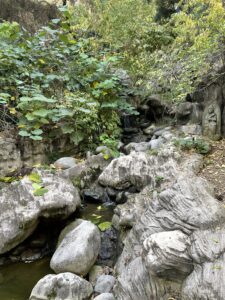Integrating Low Impact Development (LID) requirements into the Los Angeles building regulation shows the city’s commitment to sustainable development and environmental responsibility. Through effectively managing stormwater runoff and incorporating green infrastructure elements, LID practices contribute to improved water quality, enhanced urban resiliency, reduced urban heat island effect, and increased community engagement. This is vital; as Los Angeles continues to evolve, implementing LID requirements is critical to establishing a more sustainable and livable city for the future. LID revolves around managing stormwater runoff effectively, reducing pollution, and minimally impacting the natural hydrological cycle of an area. This aims to preserve water quality, alleviate flooding, and promote sustainable urban development by implementing LID practices.
regulation shows the city’s commitment to sustainable development and environmental responsibility. Through effectively managing stormwater runoff and incorporating green infrastructure elements, LID practices contribute to improved water quality, enhanced urban resiliency, reduced urban heat island effect, and increased community engagement. This is vital; as Los Angeles continues to evolve, implementing LID requirements is critical to establishing a more sustainable and livable city for the future. LID revolves around managing stormwater runoff effectively, reducing pollution, and minimally impacting the natural hydrological cycle of an area. This aims to preserve water quality, alleviate flooding, and promote sustainable urban development by implementing LID practices.
 LID Water Quality
LID Water Quality
The LID requirements in Los Angeles have yielded positive results for the environment and the community. Firstly, one powerful asset is through improving water quality. Implementing LID practices in the city has significantly improved water quality by effectively reducing the pollutant load entering water bodies. This is via managing stormwater on-site. Evaluating the risk of harmful substances, such as heavy metals, oils, and sediment, that make their way into streams and rivers is significant. Secondly, LID requirements for helping address issues related to urban flooding and water scarcity must be in submittals. One requirement is managing stormwater effectively, through dry wells, or permeable porous pavement.
LID Environmental Resiliency
LID promotes a more resilient urban environment, reducing strain on existing stormwater infrastructure and reducing dependency on imported water sources. A viable method is Downspout routing. Essentially gutters to mitigate rainwater. It is suggested to use rain barrels or Cisterns to collect water. Additionally, stormwater planters can be in place. These planters collect water from pipes and redirect overflow to the planter’s surface. A minimum capacity of two hundred gallons is a requirement for storage. Plans must show pump systems or bibs. For backflow prevention devices, a plumping permit will be needed. The manufacturer specifications of the rain barrels are to be included in the plans.
Urban Heat Island
Another area in the requirements is using green infrastructure elements, such as green roofs and vegetation, to help mitigate the urban heat island effect in Los Angeles. These features can assist in lowering ambient temperatures, improving air quality, and enhancing the city’s overall livable quality. There are various methods to include landscape irrigation. The plan must have at least two fifteen-gallon trees that exist. One of the trees may be drought tolerant. The trees should be near impervious surfaces. Another way to meet requirements is by creating a Green Roof. The submittal for new projects must show calculations of the design for roofing that are fire department plan checked. Green roofs have a livable component due to vapor barrier layers, thermal insulation, drainage layer, filter membrane, soil, and vegetation. Green roofs have many benefits; being aesthetically attractive also helps the ambiance.
Positive Influence
The Los Angeles LID requirements help foster community engagement by encouraging active participation in environmentally friendly design and construction practices. The awareness and involvement of residents, developers, and architects in implementing LID measures contribute to a more sustainable and resilient city. As Los Angeles, a densely populated city, has demonstrated it is possible to integrate sustainability, it may encourage more metropolitans to go in this direction. The significance of taking a proactive stance in promoting responsible construction and land development through Low impact developments is critical to add to building regulations.
